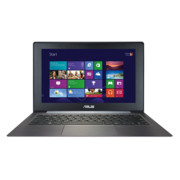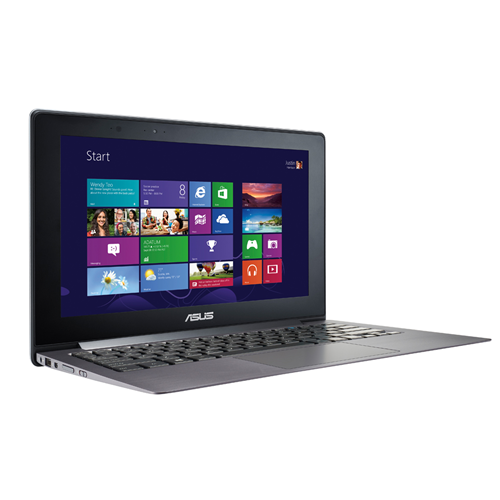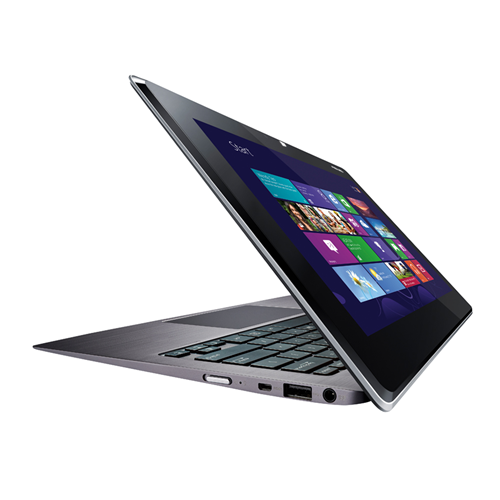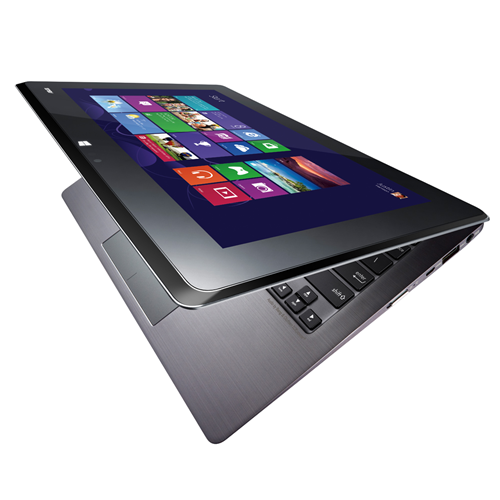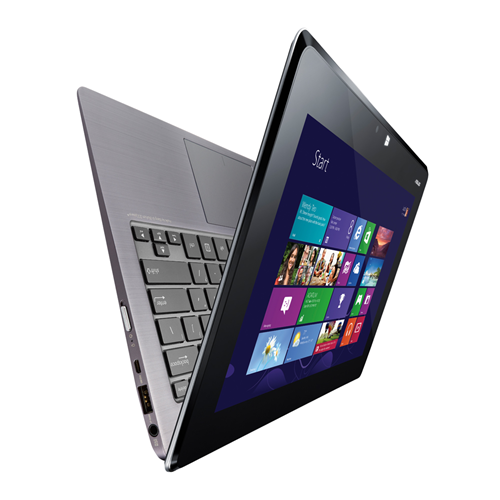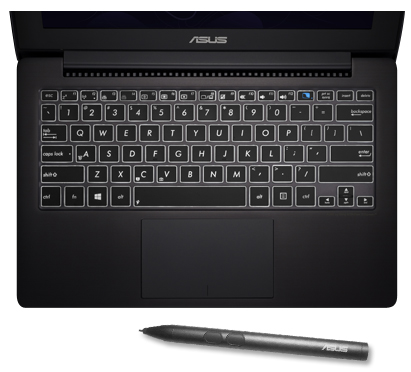Asus Taichi 21-CW002H
Specifications
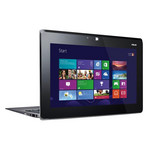
Price comparison
Average of 3 scores (from 6 reviews)
Reviews for the Asus Taichi 21-CW002H
Source: PC Authority
 Archive.org version
Archive.org versionMany manufacturers are struggling to find the most natural meeting point between the tablet and the laptop, and Asus’ own Windows 8 range provides yet more evidence of this. With its VivoBooks marrying touchscreens to standard laptops, the forthcoming VivoTab range mimicking the separate tablet and keyboard dock concept of the Android-powered Transformer Pad, and the Taichi 21 ploughing its own dual-screened furrow, it seems even Asus isn’t confident enough to put all of its eggs in one basket. Give it a few years and a refined, lighter chassis married with more power-efficient CPUs and improved battery life could see this dual-screened form factor present a compelling hybrid. At present, though, Asus’ Taichi 21 feels like a bold, innovative concept that’s just a little too far ahead of its time.
Single Review, online available, Short, Date: 02/19/2013
Rating: Total score: 67%
Source: Ultrabook News
 Archive.org version
Archive.org versionASUS deserves applause for trying something new and doing it as well as is possible given the current technology. It’s a flagship product that’s brought ASUS a lot of well- deserved attention but we don’t think it’s going to sell that well. It’s simply ahead of its time. Ivy Bridge is not a consumer tablet-capable processor and sandwiching two 1080p screens comes with big size and battery life trade-offs. The Taichi 21 needs to be 20% lighter with 50% better battery life. Interestingly that could be only one generation away. Haswell could make products like this into highly dynamic and usable devices that span consumer and business use.
Single Review, online available, Long, Date: 02/11/2013
Source: Engadget
 Archive.org version
Archive.org versionAround the time I wrote this review, I was also working on Engadget's first-ever laptop buyer's guide. I was sure the TAICHI would be a shoo-in for the convertible section, what with its innovative design and sterling spec sheet. Unfortunately, as inventive as this is as a concept, the finished product isn't quite what we all thought it would be.
Single Review, online available, Long, Date: 02/06/2013
Source: Good Gear Guide
 Archive.org version
Archive.org versionThe ASUS Taichi 21 is a hybrid Ultrabook that ships with two Full HD screens. Open the lid to use it as a laptop, close the lid to use it as a tablet. It's easy to use and it provides a very good tablet experience. It's not perfect though: we think it needs some tweaks to the hardware and software. But overall, it's a unit worth considering if you're after a Windows 8 hybrid unit.
Single Review, online available, Medium, Date: 11/19/2012
Rating: Total score: 75%
Foreign Reviews
Source: Chip.de
 DE→EN Archive.org version
DE→EN Archive.org versionSingle Review, online available, Medium, Date: 02/05/2013
Rating: Total score: 78% price: 63% performance: 75% features: 66% display: 89% mobility: 71% ergonomy: 88%
Source: Notebookjournal
 DE→EN Archive.org version
DE→EN Archive.org versionSingle Review, online available, Long, Date: 01/18/2013
Rating: performance: 70% features: 30% display: 70% mobility: 40% workmanship: 70% ergonomy: 20%
Comment
Intel HD Graphics 4000: Processor graphics card in the high end Ivy Bridge models. Offers a different clock speed in the different CPU models (ULV to desktop quad core) and therefore a different performance.
Non demanding games should be playable with these graphics cards.
» Further information can be found in our Comparison of Mobile Graphics Cards and the corresponding Benchmark List.
3317U: Ivy-Bridge-based ULV-CPU in Q2 2012. Offers a core clock of 1.7 - 2.6 GHz and an HD 4000 GPU (350 - 1050 MHz). The TDP is rated at 17 W.» Further information can be found in our Comparison of Mobile Processsors.












